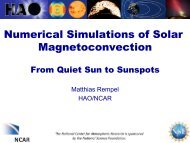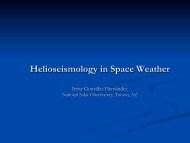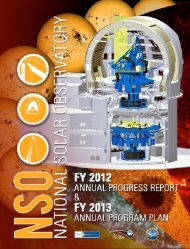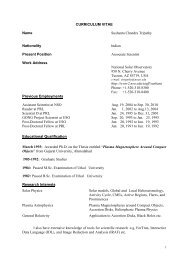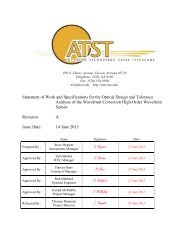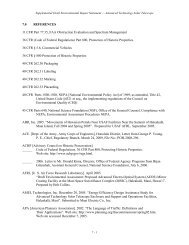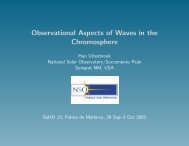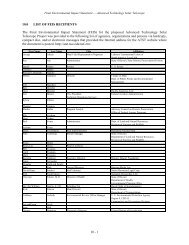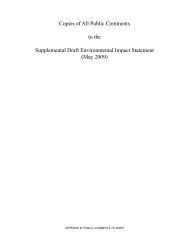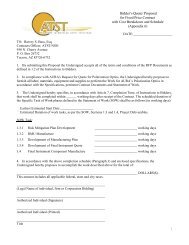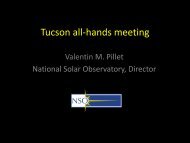F2 - ATST
F2 - ATST
F2 - ATST
Create successful ePaper yourself
Turn your PDF publications into a flip-book with our unique Google optimized e-Paper software.
Cultural Surveys Hawai‘i Job Code: HALEA 2 Scoping Meetings and Section 106 TestimonyAgency/IndividualDateSummary of View and Cultural ConcernsNoActionMitigationSuggestionsFor<strong>ATST</strong>NotStatedMitigationCommentsInteriorMary Evanson23-Oct-2006In this letter Ms. Evanson calls to attention the inadequacies andmajor geographical errors of the Cultural Review (Appendix F of theDEIS).None X NoneMary Evanson29-Sep-2006Ms. Evanson read her public comment from a letter previouslycomposed: Ms. Evanson feels protective of Haleakalā, “this project isso huge it will change Haleakalā forever. Please find another site.”Again Ms. Evanson states that she is “deeply troubled” by the DEISas it is full of errors. She is concerned that these errors will getcirculated and perpetuated. (Letter drafted for public hearing)XNoneNoneMary Evanson13-Mar-2006This letter specifically addresses the errors in the Cultural ResourceEvaluation.None X NoneMaui CulturalLands,Inc.Edward R.N.Lindsey Jr.23-Oct-2006“[i]t is with great concern that many of us Kanaka Maoli arecompelled to give testimony against a project that is so destructive tothe well being of the Hawaiian culture and its sacred sites.” “When aculture depends on these natural wonders of their environment forsurvival and reverent communications to a power higher thanthemselves, all care must be given to this practice. Haleakalā is notedthroughout Polynesia as on of a most sacred area. There are stories,legends, events, but most important, prayers by generations ofKahunas. As many visitors can testify there is a life force within theserocks that have influenced their lives.”XNoneNoneMr. WilliamD. Evanson23-Oct-2006“I believe the DEIS is inadequate and/or insufficient. It is based onfaulty assumptions and biased in its conclusion…” Mr. Evansoncontinues, “Negative impact to historic and cultural significancedownplayed...” He feels that the cultural evaluation lacked significantmo‘olelo, oli, and hula references to Haleakalā. And he explains, “thefact that the…words used most often in conjunction with Haleakalāare “kila kila” (majestic, tall, strong), “ha‘aheo” (pride) and“hanohano” (glorious, magnificent, stately) [proves] Haleakalā isheld in high esteem and with great reverence in native Hawaiianhistory and culture.”XNoneNoneAPPENDIX F (2): Supplemental Cultural Impact Assessment For the Proposed AdvancedTechnology Solar Telescope (<strong>ATST</strong>) at Haleakalā High Altitude ObservatoriesTMK (2) 2-2-07:00879



